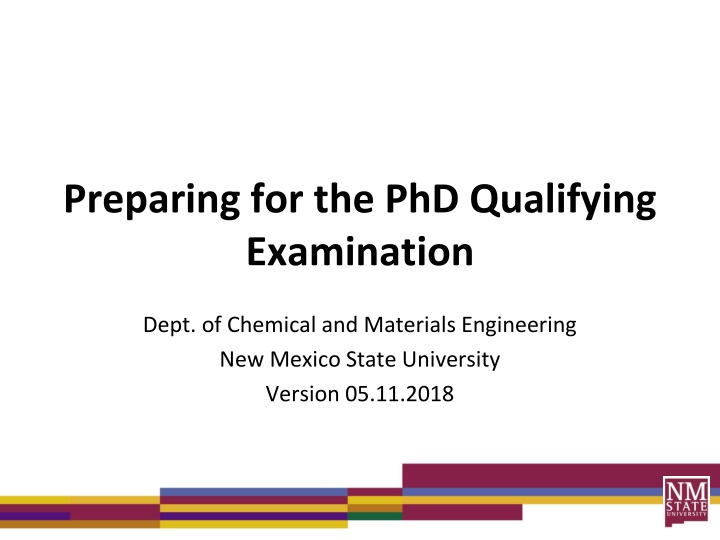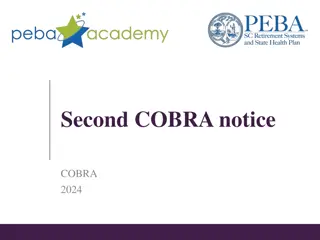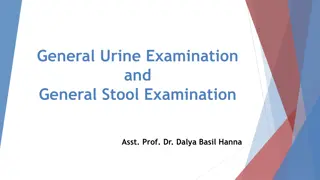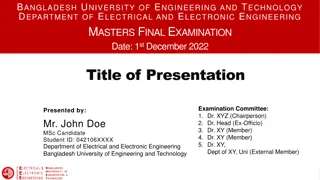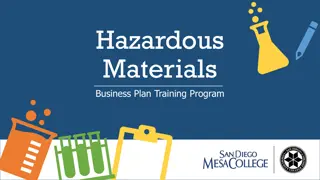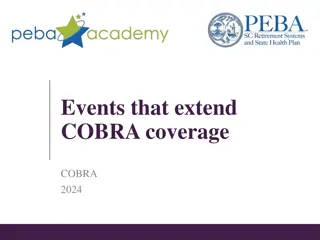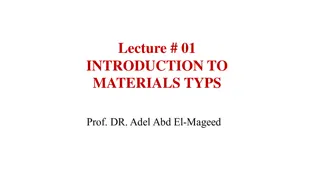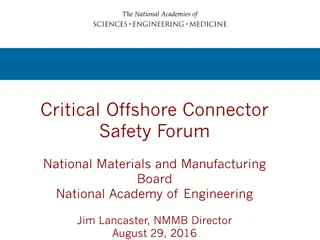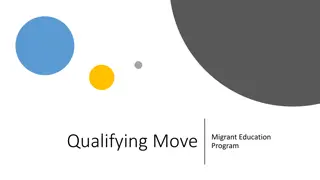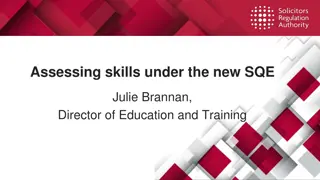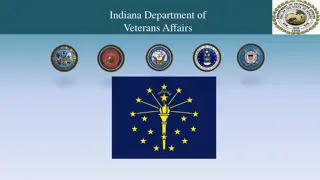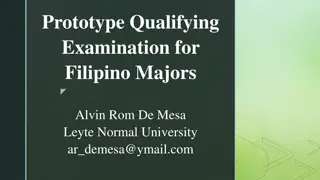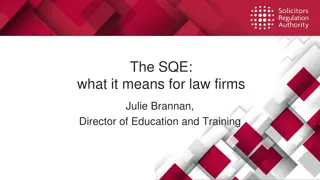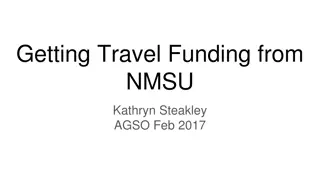Guide to Ph.D. Qualifying Examination - NMSU Chemical & Materials Engineering
Dive into the details of the Ph.D. Qualifying Examination process at New Mexico State University's Department of Chemical and Materials Engineering. Learn the differences between B.S., M.S., and Ph.D. degrees, understand the purpose of the qualifying exam, get insights into the exam schedule, research article selection criteria, and how to critically review scholarly articles effectively to prepare for the assessment.
Download Presentation

Please find below an Image/Link to download the presentation.
The content on the website is provided AS IS for your information and personal use only. It may not be sold, licensed, or shared on other websites without obtaining consent from the author.If you encounter any issues during the download, it is possible that the publisher has removed the file from their server.
You are allowed to download the files provided on this website for personal or commercial use, subject to the condition that they are used lawfully. All files are the property of their respective owners.
The content on the website is provided AS IS for your information and personal use only. It may not be sold, licensed, or shared on other websites without obtaining consent from the author.
E N D
Presentation Transcript
Preparing for the PhD Qualifying Examination Dept. of Chemical and Materials Engineering New Mexico State University Version 05.11.2018
What are the differences among a B.S., M.S. and Ph.D. B.S. degree: primarily coursework M.S. degree: coursework and research Ph.D. degree: primarily independent research
Purpose of the Qualifying Exam Demonstrate an important skill in independent research: the ability to critically evaluate a recently published research article
Qualifying Exam Schedule 1. Select research article (today) 2. Critically evaluate article (next two weeks) 3. Submit written critique (5:00 p.m. May 25, 2018) 4. Present oral critique (May 29, 2018). Four time slots 8:00 a.m.-10:00 a.m 10:00 a.m.-noon 1:00 p.m.-3:00 p.m. 3:00 p.m.-5:00 p.m.
Research Article Selection 1. Draw lots for selection order 2. Do not choose an article closely related to your research area 3. Do not choose an article submitted by your Ph.D. advisor
Critical Review adjective crit i cal \ kri-ti-k l \ a : inclined to criticize severely and unfavorably His critical temperament cost him several friends. b : consisting of or involving criticism critical writings; also : of or relating to the judgment of critics The play was a critical success. c : exercising or involving careful judgment or judicious evaluation critical thinking a critical commentary on the mayor's proposal d : including variant readings and scholarly emendations a critical edition https://www.merriam-webster.com/dictionary/critical?src=search-dict-hed
Critical Review 1. Study the article in detail 2. Identify the problem(s) addressed in the article 3. Formulate a critical appraisal of the authors contributions to the problem(s) AND the significance of the work in light of other publications in the field 4. Critically evaluate the technical soundness of both the approach used AND the results obtained in the published work 5. Determine BOTH the article s good and bad parts 6. Propose, in concrete terms, research work that might be done to extend and (if necessary) improve upon the study discussed in the article
Critical Review Submit a written summary of your findings Present an oral report of your findings
Studying the article: SQ3R Method S: Q: R: R: R: Survey Question Read Recite Review
SQ3R Method-Survey Quickly preview article: Structure (including headings) Abstract Figures Tables Equations
SQ3R Method-Question During the survey, write down questions that arise to help you as you seek to understand the material in the article Rewrite the following as questions: Section headings Figure captions Equations Table headings Etc.
SQ3R Method-Question Ask additional questions What were the authors trying to accomplish? What is new? What have others done that is similar and documented in the literature? What new terms are used in the article? What methods were used? What are the strengths of the work? What are the weaknesses of the work? Did the authors accomplish their purpose?
SQ3R Method-Question Socratic Questions Questions about the problem statement: why does the problem need to be solved? Questions for clarification: is any information missing or unclear? Questions that probe assumptions: what are the assumptions? what could we assume instead? Questions that probe reasons and evidence: do the facts and observations support the assertions and conclusions? Questions that probe viewpoints and perspectives: is there a counterargument to the one that was presented? Questions that probe implications and conclusions: Given all the facts, is the best possible conclusion the one that was presented? Modified from Fogler, LeBlanc and Rizzo, Strategies for Creative Problem Solving
SQ3R Method-Read Read article in detail, looking for answers to questions (and more questions) Look for other articles to read that are related to this article, including articles cited in your article
SQ3R Method-Recite Restate the main points of the article in your own words (either aloud or in written form)
SQ3R Method-Review Attempt to answer your questions about the article without referring to the article
Recommendations for Written Report Start first draft early Write for non-specialists Edit, edit, edit. Observe ACE criteria: A: Accuracy C: Clarity E: Economy
Recommendations for Oral Presentation Plan 20 minute presentation Simplify PowerPoint sides Cover main points Anticipate questions
Examination Rules https://chme.nmsu.edu/academics/grad/qualifying- examination/ Student must analyze the assigned article and compose the written critical report themselves with no assistance from others. However, students may obtain editorial help with the grammar, punctuation, spelling, and so forth. Under no circumstances is the editor/proofreader allowed to read the journal article you are reviewing.
Examination Rules Student must prepare an oral presentation themselves with no help from others. However, students may practice their presentation before a group of their fellow graduate students. Under no circumstances may the audience be allowed to read either the article the student is reviewing or the student s written review of the article. If student requires access to journals or other references, it is permissible to request assistance from the professor who submitted the article being reviewed.
Examination Rules Student may not discuss their written report or their oral presentation with their adviser. Violation of these rules may result in failure for the Qualifying Examination. Written reports must be limited to six (6) single- spaced pages, prepared using 12 point Times New Roman font and having 1 margins on all edges of the document. All figures, tables, and bibliographic lists must be attached on separate pages, not included inline with the written text of the exam.
Examination Rules The student s research advisor may attend the student s presentation, but may not be present during the question & answer session that follows.
Structure of Oral Examination The oral presentation will be approximately one hour in length; the student will give a 20-minute presentation, followed by a 40-minute question and answer session. The oral presentation is expected to cover the research field background, content of this article, and critical appraisal of both the piece of work represented by the article, as well as future work suggested by the article (explicitly and implied).
